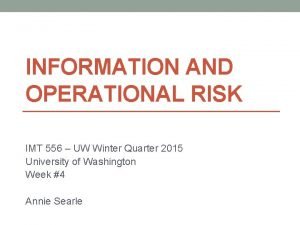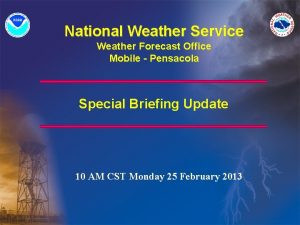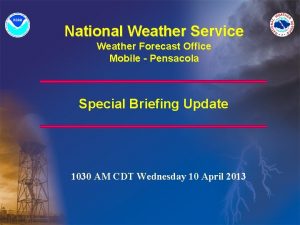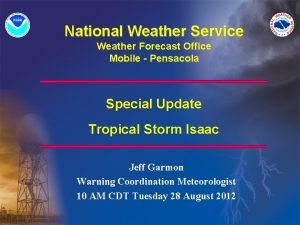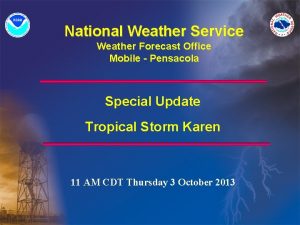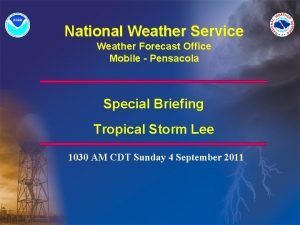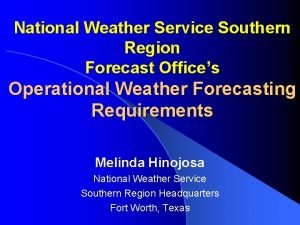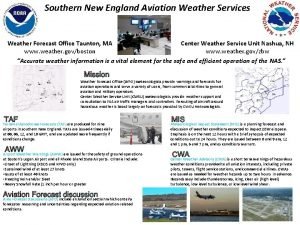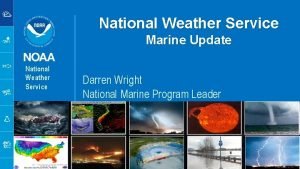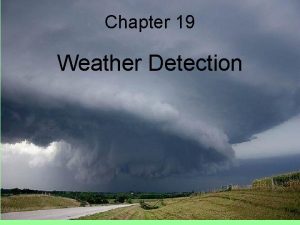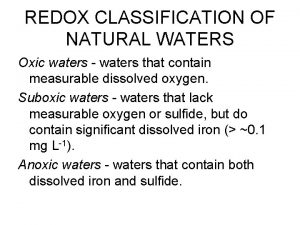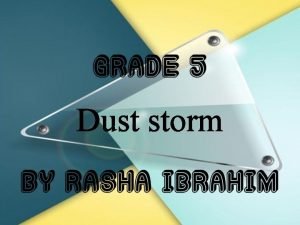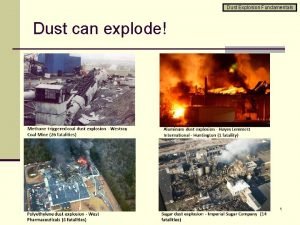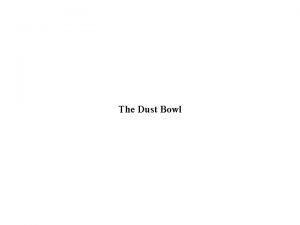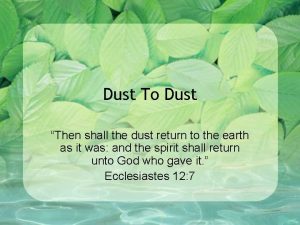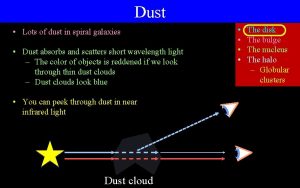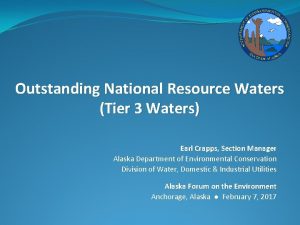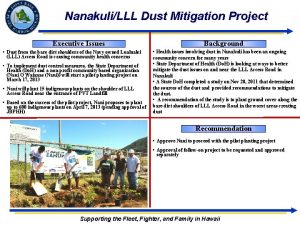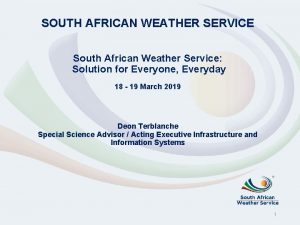Dust Detection Project Ken Waters National Weather Service
















- Slides: 16

Dust Detection Project Ken Waters National Weather Service, Phoenix Dust Storm Workshop, Casa Grande March 19, 2014

Concept PROBLEM: Blowing dust can quickly reduce visibility to zero, creating dangerous driving conditions in Arizona Many incidents are difficult to predict (e. g. , small-scale dust “channel” events) Few sources of observations (expensive to install and maintain, typically not situated near dust storm source regions) SOLUTION: Design a very inexpensive network of dust particulate sensors. Report in near-real-time to the “cloud”. Potentially use as an alerting device for responders and the National Weather Service. Cost is about $100 each installation. Point is to not focus on the precise measurement values but rather simply on the detection of the onset of the event. Low cost makes it more practical to populate a large network with much higher spatial resolution than could be achieved with much more expensive hardware.

History 2013 Dust Storm Workshop Project idea was floated to combine low-cost development platforms with low-cost environmental sensors which can send indications of dust conditions in real-time up to the “cloud” 2013 Initial Results Only two dust events (both during the monsoon season) caught while sensor was activated Both times the sensor showed immediate spike with a graduated fall back to normal levels after 20 -30 minutes Unfortunately a hard disk failure in September 2013 led to loss of the captured raw data sets Second installation set up in January 2014 but was stopped with the failure of an SD card in the Raspberry Pi platform. LESSONS LEARNED: back up all software and scripts on a recurring basis and on a different platform; document the process carefully; save off data sets on a regular basis;

2014 Update After two hardware failures (Sept 2013 and Mar 2013) another real-time sensor was set up in mid. March 2014. Now have added two additional sensors to detect Temperature, Relative Humidity, and optical levels A Davis Instruments Vantage Pro 2 home weather station has logged numerous dust wall events and has been most responsive with immediate drops in temperature and increase in RH

The “Maker Movement” Low-cost platforms that easily interface with the environment Arduino Single board microcontroller providing analog and digital inputs and outputs Raspberry Pi Single board Linux-based computer Both devices have gained tremendous interest from experimenters and developers

Dust Sensors Two low-cost options Shinyei PPD 42 NS Sharp GP 2 Y 1010 AU 0 F Source: https: //www. sparkfun. com/products/9689 Source: http: //www. seeedstudio. com/wiki/Grove_-_Dust_Sensor

Sensor #1: Shinyei PPD 42 NS Produces digital output of both PM 2. 5 and PM 10 particulate (microg/m 3) Source: http: //www. howmuchsnow. com/arduino/airquality/grovedust/

Shinyei PPD (aka Grove) Source: Shinyei: https: //mega. co. nz/#!Fd. Rl. BDr. I!FL 6 e. GF 5 Gsj. K 5 So 81 OI_DXvv 0 G 3 Lx. Jf. Zy. Fmmj. Tn 8 LFGc

Sensor #2: Sharp GP 2 Y 1010 AU 0 F Produces analogl output of both PM 2. 5 and PM 10 particulate (microg/m 3) Source: http: //www. mentalmunition. com/2013/05/dustduino-plan-to-crowdsource. html

Block Diagram Communications to the server from the Raspberry Pi are done through a Wi. Fi adapter so can be moved easily (up to ~100 feet).

Block Diagram – Field Version Only connection needed will be 12 V power which can be supplied with an inexpensive micro. USB connector plugged into a car or laptop USB connection.

Dust Project Hardware Raspberry Pi Arduino and Sensors

Components Cost: ~ $115. 00 Full detail at: http: //satwatcher. dyndns. tv/Dust/dustparts. html

Current Setup Raw data uploaded to the Internet: http: //satwatcher. dyndns. tv/html/live/oneline Example: 2014/03/18, 12: 49: 39, 955. 951, 10. 00, 23. 00, 966 (Date, Time [MST], Time including seconds, dust value, RH, T, light) Graphics produced every 15 minutes Using GNUPlot on Linux servers http: //satwatcher. dyndns. tv/html/live/sensor_graphs. html

Near-Term Future Plans Capture a live event (none since August 2013 in my location) Construct more systems (money and time permitting) and ensure full backups of software in order to be able to quickly set up a new system in the event of another hardware failure Deploy a field version (full system minus the live connection to server and Internet) in a test during a dust storm day, likely in Pinal County vicinity Construct more systems and set up with voluntary spotters

Questions? Ken Waters Warning Coordination Meteorologist National Weather Service, Phoenix E-Mail: ken. waters@noaa. gov Phone: 602 -275 -7002 x 223 Twitter: @wxphx and @PHX_innovations
 National weather service forecast
National weather service forecast National weather service mobile pensacola
National weather service mobile pensacola National weather service mobile pensacola
National weather service mobile pensacola National weather service pensacola
National weather service pensacola National weather service pensacola
National weather service pensacola Doppler radar pensacola
Doppler radar pensacola Nws southern region
Nws southern region Taunton weather service
Taunton weather service Nws marine
Nws marine Lightening radar
Lightening radar Ken betwa link project
Ken betwa link project National breast and cervical cancer early detection program
National breast and cervical cancer early detection program National breast and cervical cancer early detection program
National breast and cervical cancer early detection program Weather station model weather symbols
Weather station model weather symbols Tongue twisters winter
Tongue twisters winter Weather and clothes
Weather and clothes It's cloudy and windy
It's cloudy and windy
